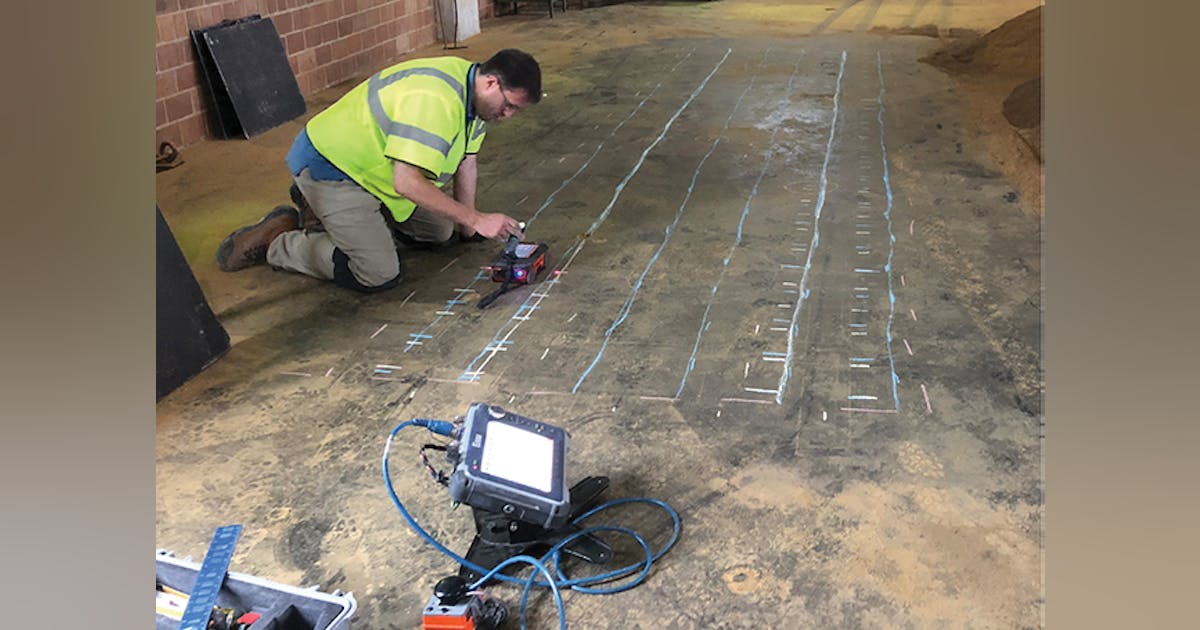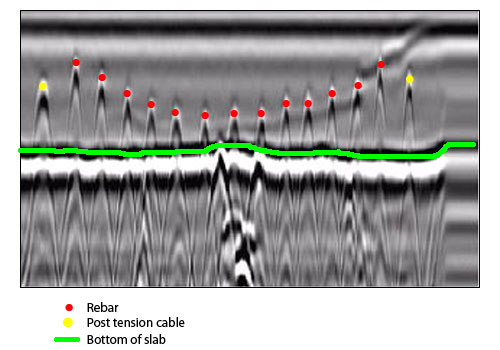Exploring the Trick Advantages of Concrete Scanning in Building Projects
In the realm of modern-day building practices, the application of concrete scanning modern technology has become an essential tool for ensuring job efficiency and architectural integrity. From boosting security measures to properly discovering utilities concealed beneath the surface area, the benefits of concrete scanning are multifaceted. The capability to streamline job timelines and reduce expenses while preserving existing frameworks is a testament to the worth this technology gives the building and construction market. As we look into the nuanced benefits of concrete scanning, it ends up being noticeable that its effect expands far past surface-level assessments, using a glimpse into the complex internet of advantages waiting to be revealed.
Improved Security Actions
Making use of advanced concrete scanning technology enhances precaution on construction sites by providing accurate detection of potential hazards concealed under the surface area. This innovation allows building teams to recognize rebar, conduits, post-tension cable televisions, and various other obstructions before excavation or drilling, significantly reducing the threat of mishaps. By identifying these aspects exactly, workers can avoid destructive essential architectural elements, thus stopping injuries, delays, and costly fixings.
In addition, concrete scanning plays an essential duty in making sure the stability of existing structures throughout restorations or growths. By discovering weak points, spaces, or deterioration within concrete components, engineers can resolve these problems proactively, boosting the general safety and security and durability of the structure. This positive strategy not only minimizes the danger of architectural failings but additionally reduces the possibility for mishaps brought on by unexpected structural shortages.
Basically, the application of concrete scanning modern technology serves as an aggressive safety step that safeguards both building and construction employees and the structural stability of structures, ultimately adding to the general success and performance of construction jobs. - RainierGPR Concrete Scanning
Accurate Discovery of Energies
Concrete scanning innovation promotes precise recognition of underground utilities, improving building and construction site safety and effectiveness. Accurate discovery of energies is crucial in building jobs to protect against costly damages, job hold-ups, and most importantly, guarantee the security of employees and the general public. By making use of innovative scanning technologies such as ground-penetrating radar (GPR) and electromagnetic induction, building teams can map out the place of hidden pipelines, cords, and various other utilities with high levels of accuracy.

Time and Expense Effectiveness

Concrete scanning technology allows building and construction teams to precisely situate rebar, post-tension cables, and other ingrained things within concrete frameworks. This precise information assists in avoiding pricey mistakes such as unexpected damage to crucial elements during boring, reducing, or coring tasks. Additionally, by identifying potential risks in advance, the requirement for costly fixings or rework due to damages can be reduced, resulting in cost savings for the project.
Furthermore, the capability to promptly and accurately spot utilities below the surface without causing any damage not just conserves time but also prevents pricey disturbances to existing framework. On the whole, the moment and expense performance advantages of concrete scanning make it a very useful get redirected here device for boosting building project management and implementation.
Conservation of Structural Integrity
Maintaining the architectural stability of buildings and framework is extremely important in making certain long-lasting stability and safety and security. Concrete scanning plays an essential duty in this conservation process by permitting building and construction experts to identify possible dangers to the structural honesty of a structure or infrastructure prior to they intensify right into significant issues. Via the use of advanced scanning modern technologies such as ground-penetrating radar (GPR) and electromagnetic induction, construction groups can non-invasively assess the problem of concrete structures, situate rebar, post-tension cables, and various other embedded components, and identify any kind of voids, splits, or wear and tear within the concrete.
Improved Task Planning
In order to ensure the effective execution of building projects, careful attention to detail and comprehensive preparation are important parts that stem from a detailed understanding of the structural conditions recognized through concrete scanning. Enhanced task preparation, helped with by concrete scanning, permits construction groups to preemptively resolve potential difficulties, allot resources much more successfully, and develop reasonable timelines. By precisely recognizing the location of rebar, post-tension cable televisions, and various other ingrained things within concrete structures, job supervisors can develop much more exact building and construction strategies that minimize the risk of expensive errors or delays. Furthermore, the information acquired from concrete scanning makes it possible for stakeholders to make enlightened choices regarding structural modifications, remodellings, or growths, bring about smoother job transitions and improved overall project outcomes. Ultimately, including concrete scanning right into the task preparation stage boosts control amongst group members, promotes proactive analytical, and adds to the effective distribution of building projects within spending plan and check these guys out timetable restraints.
Final Thought
In final thought, concrete scanning offers countless advantages in building and construction jobs. By enhancing precaution, accurately identifying utilities, boosting time and expense efficiency, protecting architectural integrity, and assisting in project preparation, concrete scanning proves to be an essential device for successful project implementation. Its ability to minimize risks, boost efficiency, and make sure project stability makes it a vital asset for building and construction professionals.
In the realm of modern-day construction methods, the application of concrete scanning technology has arised as a critical device for ensuring job performance and architectural integrity.Concrete scanning innovation makes it possible for construction teams to properly find rebar, post-tension cable televisions, and other embedded items within article concrete frameworks. Via the usage of innovative scanning innovations such as ground-penetrating radar (GPR) and electromagnetic induction, building and construction groups can non-invasively evaluate the condition of concrete structures, find rebar, post-tension wires, and various other embedded components, and recognize any kind of gaps, cracks, or deterioration within the concrete.
In order to make sure the successful execution of building projects, meticulous interest to detail and complete planning are essential components that stem from a comprehensive understanding of the structural conditions identified with concrete scanning. Eventually, integrating concrete scanning into the project planning phase boosts sychronisation amongst group members, promotes proactive problem-solving, and contributes to the successful shipment of building and construction projects within budget and schedule restraints.